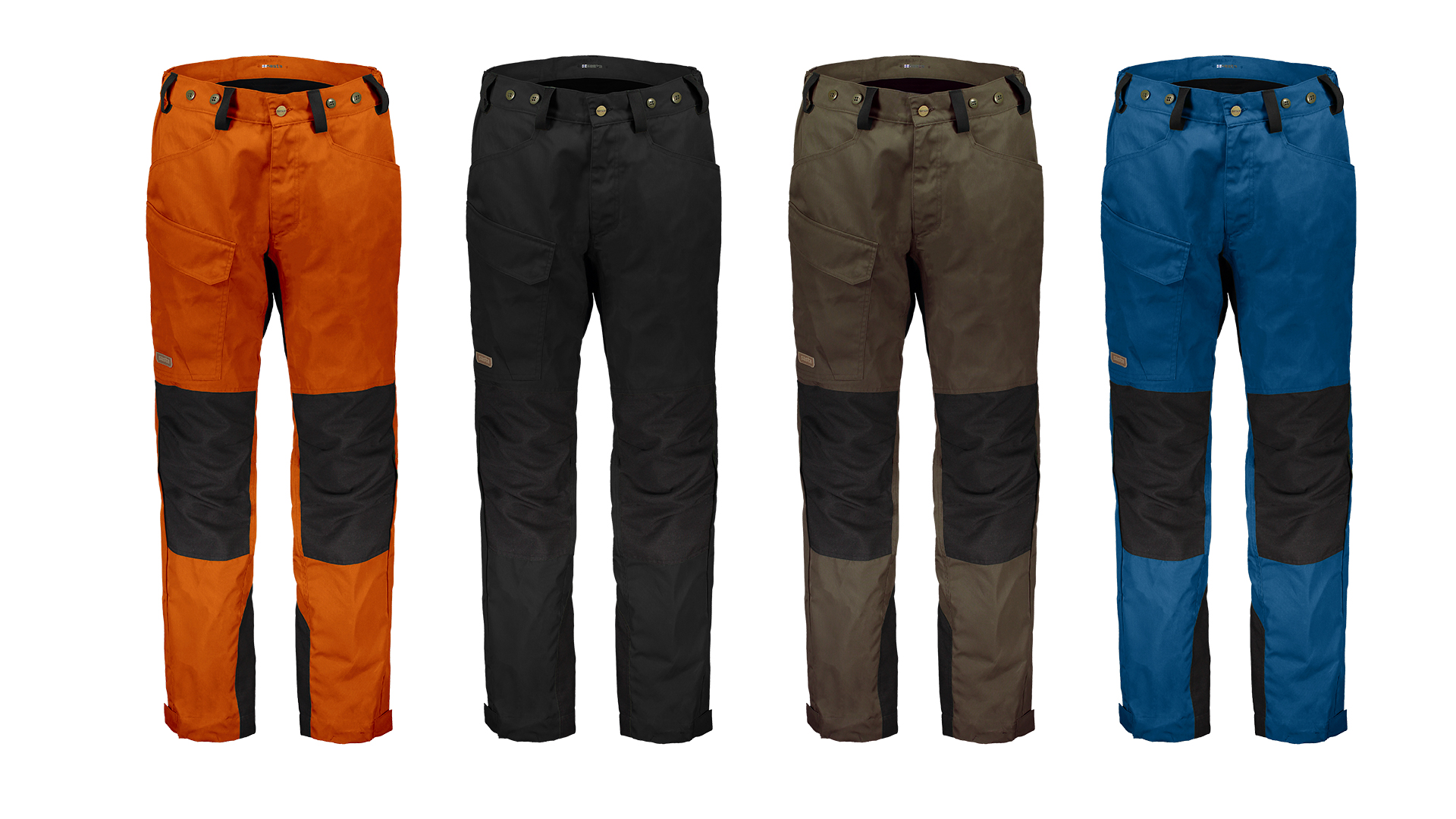Advnture Verdict
Keen camping and bushcraft types will love these rugged outdoor trousers, as will hikers who relish crashing through the heather on long moorland walks or exploring little-used forest footpaths.
Pros
- +
Tough and rugged main fabric
- +
Sustainably made
- +
Comfortable
Cons
- -
No leg vents
- -
No stretch
- -
Expensive
You can trust Advnture
Sasta Jero pants: first impressions
Sasta Jero pants come from a Finnish brand best known for making seriously tough kit for the sorts of activities and pastimes that Finns traditionally love – namely, hunting, fishing and general outdoors life. So, if your typical day might involve a morning spent foraging for chanterelles in the forest before whiling away an afternoon chopping firewood for the winter, Sasta Jero trousers are for you. Perhaps it’s no surprise that bushcraft legend Ray Mears loves ’em.
They’re also made with sustainability in mind, since the main fabric is a polycotton blend of recycled polyester and organic cotton (for more on this subject see sustainable hiking clothes). This is pre-treated with PFC-free Nikwax water-repellent solution for added weather resistance. The trousers are reinforced at the knees and ankles with Kenytex panels for durability – a tough polyester fabric that incorporates Kevlar fibres (yes, the same stuff that is used to make bulletproof vests). That gives a clue as to just how durable these hiking pants are. A stretch gusset in the crotch also permits a little extra flexibility.
Other features include articulated, pre-shaped knees, a large, zipped thigh pocket with a secondary press-stud storm flap and Velcro-adjustable tabs at the ankles and calves. Hidden lace hooks are fitted to allow you to attach them to your best hiking boots too. Keeping these trousers up is also a belt-and-braces affair – literally – since as well as being fitted with belt loops, they also have twin sets of buttons to fit braces. The waistband is semi-elasticated for a more forgiving and comfortable fit.
• RRP: $210 (US) / £160 (UK)
• Style: Cargo
• Gender specificity: Men’s and women’s versions available
• Sizes: Men’s EU 46–60, regular leg only Women's EU 32–46, regular leg only
• Weight (Men’s): 500g / 17.6oz
• Materials: Main fabric Recycled polyester (65%), organic cotton (35%), wax- and Nikwax Cotton Proof treatments Reinforced panels Kenytex (93% polyester, 7% Kevlar)
• Colors: Orange / Dark Olive / Forest Green / Sea Blue / Black
• Compatibility: Three-season hiking, camping and backpacking
Sasta Jero pants: on the trails
These trousers are so rugged and well made that they would certainly function as field or even work pants as well as general outdoor wear. However, we’d say they’re best-suited to long woodland or moorland yomps, particularly if you’re venturing along little-trodden paths that might involve pushing though a fair bit of tangled heather, gorse, bracken and briar.
The fact that they cinch in at the ankle and mid-calf allows for a neat and precise fit in the lower leg, preventing them from getting snagged or caught, while also keeping twigs and other debris out of your boots.
They're also some of the best hiking pants for more technical mountain terrain – they’re certainly tough enough – although bear in mind that the fabric doesn’t offer quite the same articulation as stretch softshell pants.
Remarkably, given their burly construction, they’re neither overly stiff nor heavy, so they still provide good all-day comfort. There are no vents to help with airflow though, so on the warmest summer days we’d recommend switching to lighter pants. Similarly, in winter you might want more weatherproof options – though these will happily fend off spring showers and autumn drizzle.
All the latest inspiration, tips and guides to help you plan your next Advnture!
An outdoors writer and editor, Matt Jones has been testing kit in the field for nearly a decade. Having worked for both the Ramblers and the Scouts, he knows one or two things about walking and camping, and loves all things adventure, particularly long-distance backpacking, wild camping and climbing mountains – especially in Wales. He’s based in Snowdonia and last year thru-hiked the Cambrian Way, which runs for 298 miles from Cardiff to Conwy, with a total ascent of 73,700 feet – that’s nearly 2½ times the height of Everest. Follow Matt on Instagram and Twitter.


